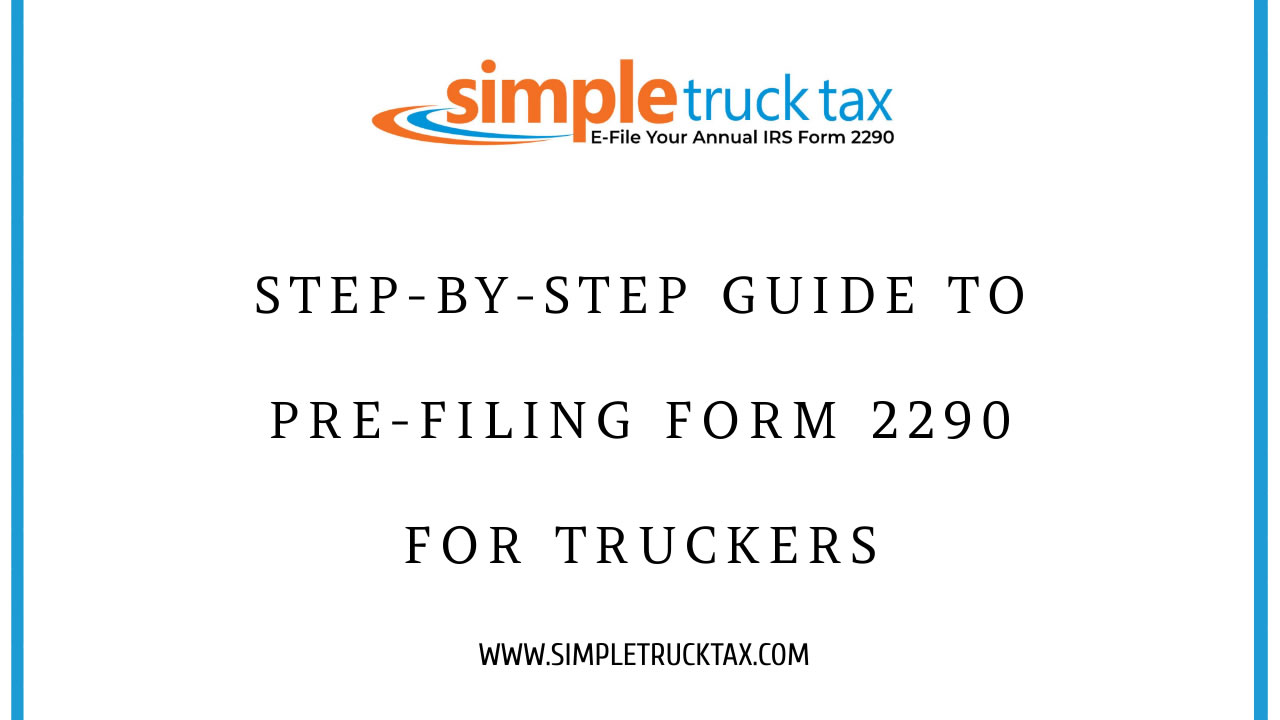
Step-by-Step Guide to Pre-Filing Form 2290 for Truckers
Truckers may find it very difficult to know what to do when it comes to the taxes that should be paid on heavy highway vehicles. The form that needs to be known is Form 2290, which is for reporting and paying the Heavy Vehicle Use Tax (HVUT). Doing pre-filing of this form could save time and stress for you as a trucker. Here are some steps by step process that can help you through:
1. Understand the Significance of Form 2290
Form 2290 is an important document for those who own trucks with a weight of 55,000 pounds or more. It is used in reporting and paying the HVUT, which finances highway maintenance and construction projects. Late filing or payment of this tax attracts penalties and interest.
2. Gather Mandatory Details
Prior to starting your pre-filing of Form 2290, ensure that you have all necessary information:
- Employer Identification Number (EIN): To file Form 2290, one must have an EIN. If you do not have it yet, apply for it from IRS.
- Vehicle Identification Number (VIN): Each vehicle’s VIN is required in the form.
- Gross Taxable Weight: Find out what your vehicle’s gross taxable weight is including maximum load size it can carry.
3. Select the Correct Filing Method
Form 2290 can be filed electronically or by paper. However, if 25 or more vehicles are being reported on a single return, then electronic filing becomes mandatory. It is faster, more convenient and gives immediate confirmation of your submission.
4. Compute HVUT Amount
The Heavy Vehicle Use Tax due is calculated based on the gross taxable weight of your truck(s) and the number of miles driven. Use the IRS’ tax rate table to find out exactly how much you owe. Note that trucks which travel fewer than 5,000 miles (7,500 for agricultural vehicles) are exempt from HVUT but still need Form 2290.
5. Complete Form 2290
When pre-filing Form 2290, follow these steps:
- Part I: Provide your business information, including EIN, name, and address.
- Part II: Enter the details of your vehicles, including the VIN, gross weight category, and taxable status.
- Schedule 1: This is the form you need to fill out to list all of your vehicles that are subject to HVUT. Keep it handy! It will serve as a receipt when you register your vehicle with the DMV.
6. Submit Your Form 2290
For those who are pre-filing electronically, you should use an IRS-authorized e-file provider to submit your form. If filing by paper, mail your completed Form 2290 to the IRS address listed in the form instructions. Don’t forget to keep a copy of what you send for your records.
7. Paying the HVUT
Pick one of these ways to pay the HVUT:
- Electronic Funds Withdrawal (EFW): Have your bank account debited directly when you file electronically.
- Electronic Federal Tax Payment System (EFTPS): Use the EFTPS system to pay online.
- Check or Money Order: Mail a paper form with a check or money order enclosed.
8. Receiving and Keeping Schedule 1
Once you’ve submitted your Form 2290 along with payment, and get your stamped schedule 1 back on July 1, 2024
9. Note Down Important Dates
Just so you know – HVUT is an annual tax which runs from July 1 through June 30 every year – be sure to file Form 2290 and pay your dues before August 31 lest ye incur penalties. Remember these dates by marking them on the calendar or setting up alerts in your phone.
Before you can relax and unwind, you need to pre-file Form 2290. Unfortunately, waiting until the eleventh hour may cause you to have troubles. The Internal Revenue Service requires that large automobiles be compliant with their laws. However, you will not notice this because everything will be all right when your focus remains intact on doing what you do best – ensuring that goods are flowing from one point to another.
Note: For more information, visit IRS website